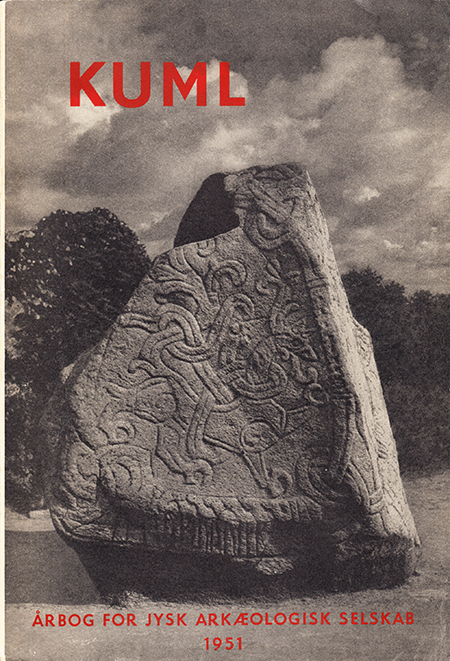Blokfløjter fra oldtid og middelalder
DOI:
https://doi.org/10.7146/kuml.v1i1.24760Keywords:
FløjterAbstract
Flutes from prehistoric and medieval times.
In 1950, in the course of digging a new bed for the Lilleaa, a fairly large jar, of a type common in the Celtic Iron Age, was met with at a depth of about 1½ meters a little to the east of Vesterbølle. According to the finder the flute shown in fig. 2 lay in the jar.
It is formed of the shinbone of a roe deer, the one knuckle being shaped to form a mouthpiece and the other cut off. It is 15 cms. long, with an almost square blowhole (8 X 8 mm.) cut 16 mms. from the end and three bored tone holes, 8 mms. apart, conical in shape and 5 mms. in diameter at the surface, the nearest being 5.8 cms. from the edge of the blowhole. The plug for the mouthpiece is missing.
Such primitive musical instruments are rare, this being the eighth found in Denmark and the only one which can be dated with certainty to the prehistoric era.
The previous seven are illustrated here: No. 1 (fig. 3) is from a New Stone Age settlement on Bornholm but its dating to the New Stone Age is uncertain as no other bone objects survived. Such a date is typologically unlikely. It is made of the shinbone of a sheep and is 14 ½ cms. long. No. 2 (fig. 4) is made of the shinbone of a sheep and is 17 ½ cms. long. Its fin ding place is unknown. No. 3 (fig. 5) was found near the surface at Hals Skanse. It is of a legbone and is 15½ cms. long. No. 4 (fig. 6) was found under the floor of Egelund farm, built 1869, in Paarup. It is 17½ cms. long and formed of the shinbone of a sheep. No. 5 (fig. 7), from Budolfi Square in Aalborg, was found in a culture layer dated 1000-1200 AD. It is 15.2 cms. long. No. 6 (fig. 8) lay in peat near Nyborg. It is 15.6 cms. long and made of a legbone. No. 7 (fig. 9) is 14 cms. long and was found in Svendborg together with medieval potsherds. Similar objects are known from abroad, including seven from Sweden and one from Hedeby.
The dating of these flutes is uncertain. Even disregarding the Stone Age dating of no. 1 they appear to extend from the Early Iron Age to Late Medieval times, while no. 4 may not be much more than 100 years old. Efforts to find dateable specimens from more recent times have been without result.
The worth of these flutes as musical instruments has been only scantily investigated, but the small number of tone holes and the irregular distances between them would result in only primitive music. It would be natural to regard them as precursors of or parallel to the shepherd pipes made from willow or elder stems.
S. Vestergaard Nielsen
Downloads
Published
How to Cite
Issue
Section
License
Fra og med årgang 2022 er artikler udgivet i Kuml med en licens fra Creative Commons (CC BY-NC-SA 4.0).
Alle tidligere årgange af tidsskriftet er ikke udgivet med en licens fra Creative Commons.


